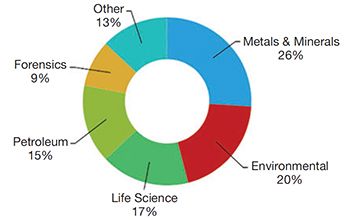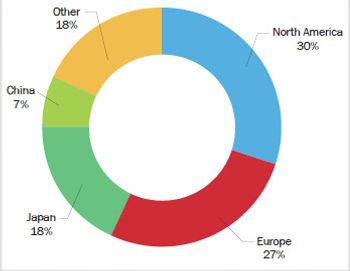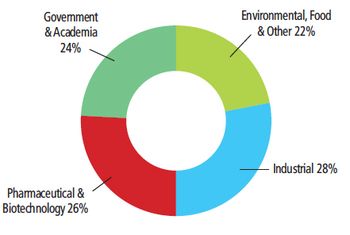
- Spectroscopy-11-01-2010
- Volume 0
- Issue 0
Market Profile: Lifetime Fluorescence
Fluorescence spectroscopy is useful for the analysis of a broad range of organic compounds. A subset of fluorescence spectroscopy is lifetime fluorescence, within which a subsubset is frequency-domain lifetime fluorescence.
Fluorescence spectroscopy is useful for the analysis of a broad range of organic compounds. A subset of fluorescence spectroscopy is lifetime fluorescence, within which a subsubset is frequency-domain lifetime fluorescence. Demand comes primarily from biotechnology and life-science applications, which are helping to drive strong growth in this relatively young niche segment of the market. Lifetime fluorescence measures the time between excitation and relaxation, rather than just the intensity of the emitted energy, and can be measured using either time-domain or frequency-domain techniques. Time domain is the most common technique and measures the time it takes for molecules to fluoresce after being excited by a light source. A more recently developed technique is frequency-domain lifetime fluorescence, which compares the modulation and phase-shift of the emitted energy relative to the excitation energy instead, thus providing two sources of data about the sample. While both versions of lifetime fluorescence yield comparable data, frequency-domain lifetime fluorescence typically offers higher signal-to-noise and has a faster analysis time, which makes it better for real-time sensing. Frequency- domain lifetime instruments are somewhat complicated, and the technology that is needed to be able to produce practical instruments has only been developed within the last several years.
Frequency-domain lifetime fluorescence demand in 2010.
The technique is most popular in biotechnology and related life science applications, in which fluorescent compounds can be used as chemical tags. Applications include studying protein folding, DNA sequencing, cell identification, and clinical chemistry. The current market for frequency-domain lifetime fluorescence is less than $5 million annually, but will see solid double-digit growth as it develops into an important part of the broader lifetime fluorescence market.
The foregoing data were extracted from SDi's market analysis and perspectives report titled The Global Assessment Report 11th Edition: The Laboratory Life Science and Analytical Instrument Industry, October 2010. For more information, contact Stuart Press, Vice President, Strategic Directions International, Inc., 6242 Westchester Parkway, Suite 100, Los Angeles, CA 90045, (310) 641-4982, fax: (310) 641-8851,
Articles in this issue
about 15 years ago
Where Are We Now with USP <1058>?about 15 years ago
Reducing the Effects of Interferences in Quadrupole ICP-MSabout 15 years ago
Derivatization in Mass Spectrometryabout 15 years ago
Productsabout 15 years ago
Vol 25 No 11 Spectroscopy November 2010 Regular Issue PDFNewsletter
Get essential updates on the latest spectroscopy technologies, regulatory standards, and best practices—subscribe today to Spectroscopy.





